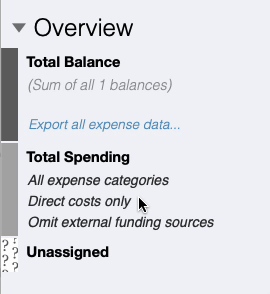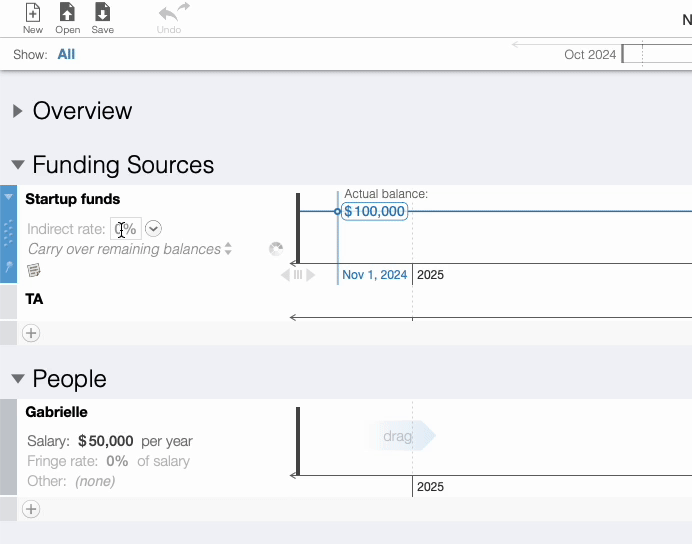

When managing grants, understanding the distinction between indirect rates and fringe rates is crucial for accurate cost estimation and allocation. Both rates are used to allocate overhead expenses, but they apply to different categories of costs.
Indirect rates (also known as overhead rates, central office rates, or facilities and administrative (F&A) rates) generally cover the costs that cannot be directly attributed to a specific project, such as administrative and operational expenses. These might include the costs of facilities, utilities, office supplies, and management salaries. Indirect rates are often used to allocate a portion of these general overhead costs across all contracts or projects that the lab is engaged in.
In Spendlab you can specify an indirect rate for each funding source, either as one rate that is constant over time or as a definition that can change over time and can also be used for other funding sources once defined. This percentage is automatically added to every expense for that funding source when calculating funds remaining — except for expense rows where you specify "No indirects" in the row header. Learn more...
Fringe rates (or "fringe benefit rates") account for employee-related expenses, including employee benefits such as health insurance, retirement contributions, paid time off (vacation and sick leave), and other fringe benefits. Fringe rates are usually calculated for a whole organization by dividing the total fringe benefits for the organization by the total direct labor costs. In many cases, fringe rates are a required part of grants and contracts, where allocation of all costs associated with employees is necessary to account for.
In Spendlab you can specify the fringe rate as the percentage of an employee's salary, either as one rate that is constant over time or as a definition that can change over time and can also be used for other employees once defined.
In summary, both indirect and fringe rates deal with costs that are not directly tied to specific tasks or work products, but they differ in scope and how they are applied. Indirect rates are broader and encompass all overhead costs, including the expenses related to business operations and management functions. Fringe rates, in contrast, only account for the benefits and compensation packages provided to employees. As such, fringe rates only apply to labor costs and are calculated separately from other indirect costs.

Learn even more about indirect rates in the Spendlab documentation.
Spendlab software makes it easier to plan and manage budgets across multiple grants. Get started by watching a 3-minute intro video and try it for free for the first 3 months to see if it works for you.

